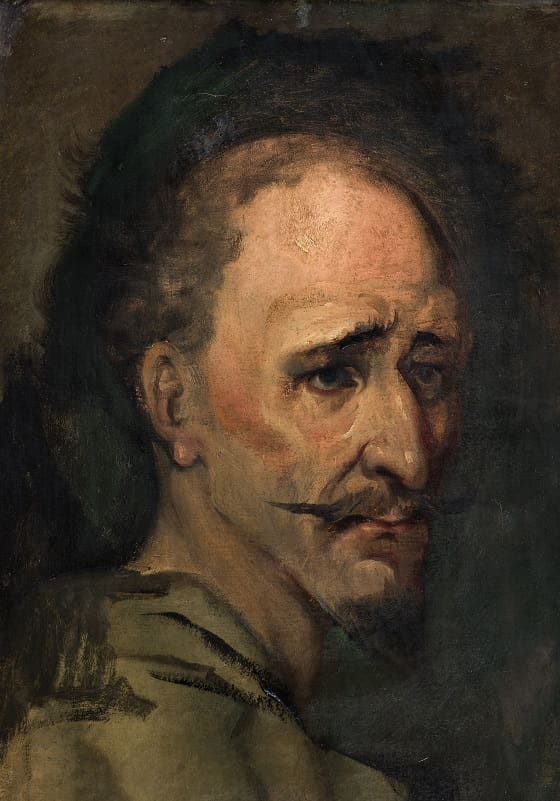Wilhelm Marstrand
Don Quixote, n.d. (after 1860)
Oil on canvas, 47,5 x 34 cm.
Inventory number: 0117NMK
Acquired before 1884. Bestowed to the museum in 1908
In this painting, Wilhelm Marstrand has portrayed the tragicomic hero Don Quixote as a despondent and confused man, staring into space. The colours are dark and blotchy, which is intended to reflect his state of mind. Marstrand was deeply intrigued by the tale of Don Quixote as the idealistic archetype and completed a great number of illustrations based on Cervantes’ novel. Don Quixote became a representation of Marstrand’s own condition. The disillusioned knight who struggled to distinguish fantasy from fiction reminded Marstrand of his own struggle between his depiction of the real and ideal. Marstrand accordingly had two overarching themes in his depiction of the tragicomic figure: The upbeat and optimistic Don Quixote in pursuit of the ideal on the one hand, and the despairing Don Quixote who has finally acknowledged defeat.
Wilhelm Marstrand (1810-1873)
Marstrand was among C.W. Eckersberg’s students and was, as the only one, very interested in narrative and illustrative painting. Marstrand worked with genre painting, literary subjects, portraiture and, in later years, history painting. He was frequently employed as a portraitist and painted a series of portraits of members of the Hage family, among others. Marstrand travelled throughout his life in the larger European countries such as Italy, France, Germany and England. He was particularly fascinated by Italy, where he stayed for several years. From here, he became a major producer of peculiar, touching, and often humorous or ironic depictions of the Italian folk life that so fascinated him.


